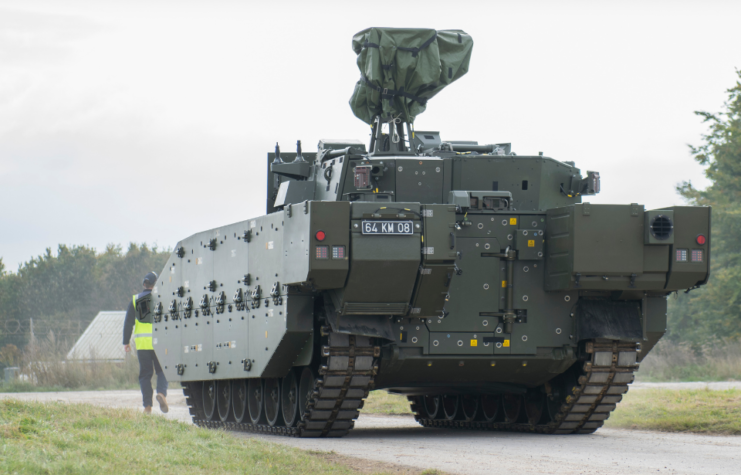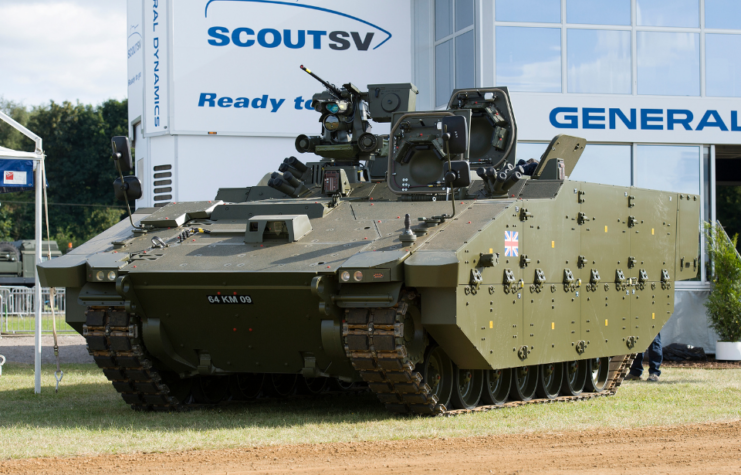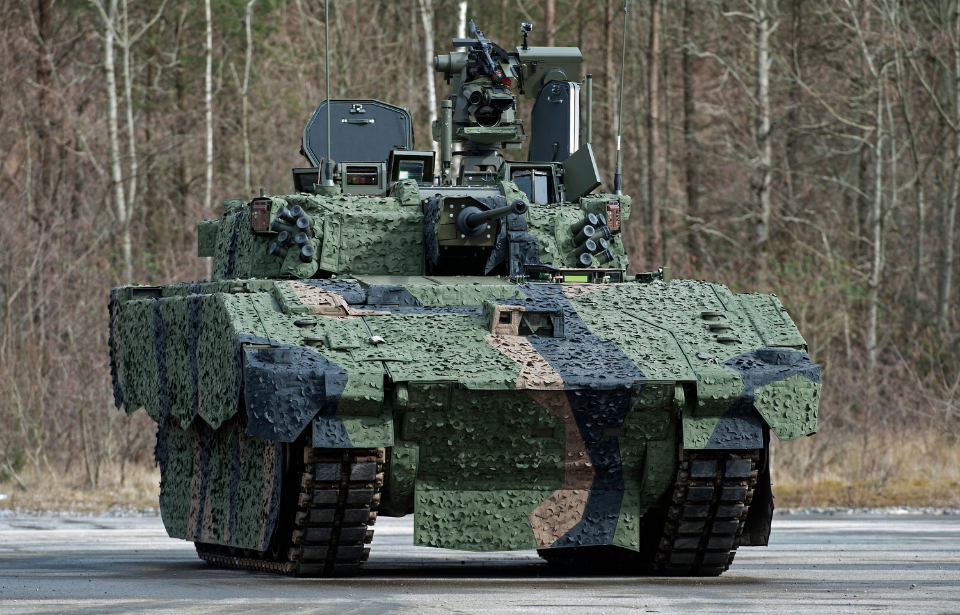The British military has put trials of a new vehicle on hold after reports emerged that state the vehicle is unsafe to drive at speeds exceeding 20 miles per hour and is rife with problems. The vehicle in question is not the Bob Semple tank, but in fact the Ajax, an armored fighting vehicle that is under development for the British military. The fleet of Ajax machines was ordered in 2014 for a price of £3.5 billion, and they are developed by General Dynamics UK.
The Ajax system is a distant relative of the ASCOD family of vehicles designed by Steyr-Daimler-Puch and General Dynamics in the 1990s. Today, the Ajax tank is much more developed compared to the ASCOD and is expected to be one of the most advanced armored fighting vehicles (AFVs) in the world.
However, repeated delays and setbacks mean the vehicle, which has been in development for a decade, is still a long way from seeing active duty.
When it is ready, the Ajax family will include Ares, the reconnaissance variant; Atlas, the equipment recovery variant; Athena, the command-and-control variant; Argus, the engineering reconnaissance variant; and Apollo, the equipment repair vehicle. Originally, the vehicles were planned to be delivered in 2017, would reach troops in 2019, and be deployed by late 2020, but constant faults mean this hasn’t come to fruition.
The Ajax is plagued with problems
The latest reports on the vehicle’s progress still don’t seem promising, as it contains a list of problems that are plaguing the program. Trials of the Ajax tanks were stopped completely between November 2020 and March 2021 as extreme levels of vibration and noise were risking the crew’s safety and causing them to experience swollen joints, tinnitus, and nausea.

More problems with the Ajax are also preventing the vehicle from firing on the move. Moreover, the vehicle cannot reverse over obstacles taller than 20 cm high. In comparison, the WWII-era M4 Sherman could climb obstacles greater than 60 cm.
When the trials resumed, these issues were still present, so crews are limited to 1 hour and 45 minutes within the vehicle, during which they have to wear noise-canceling headphones. In an effort to reduce vibrations, the Ajax cannot exceed 20 mph for the time being. After leaving the vehicle, the crew must undergo hearing loss tests.
Because of the problems, the Household Cavalry Regiment “cannot conduct effective collective training” in the Ajax.
Worryingly, a leaked report contained doubts about whether the Ajax tank will ever reach service, and if its reputation and capabilities would cause a decline in morale amongst service members.
The Ajax tanks
The program, which is four years behind schedule, was meant to provide British forces with an adaptable and state-of-the-art platform to support its operations.

Defence Secretary Ben Wallace said in 2019 that the Ajax fleet would “provide the British Army with improved flexibility, maneuverability, and battle-winning capability and advantage. Its advanced reconnaissance systems will allow British soldiers to see things first, weigh up their options, and take decisive action before their adversaries.”
At 40 tons, the Ajax tank replaced the much smaller Combat Vehicle Reconnaissance (Tracked) (CVR(T)) family of AFVs designed in the 1960s.
The Ajax is equipped with the CT40 cannon, a 40 mm cannon that fires case telescoped ammunition. This type of ammunition places the projectile within the propellant, reducing the ammunition’s overall size, which is ideal for use in the confines of an AFV. However, the relatively unproven ammunition and cannon have led to controversy over the system’s reliability, and whether the Ajax should have had it at all.
More from us: These Large Planes Make Us Wonder How They Even Flew
Alongside the 40 mm cannon is an L94A1 7.62 mm chain gun, which is also mounted in the Challenger 2 and Warrior IFV. Like the main gun, this coaxial chain gun has been the subject of controversy, after faults with the Warrior’s electrical system caused it to fire spontaneously.
Powering the Ajax tank is an 800 horsepower MTU V8, which is produced by the same manufacturer that makes the Leopard 2’s V12 engine. In normal circumstances, this engine gives the Ajax a top speed of 43 mph.
